This page is a recreation of a page that was hosted at the NASA Goddard Scientific Visualization Studio (https://svs.gsfc.nasa.gov/14627/) based on information from the Wayback Machine (https://web.archive.org/web/20250121103318/https://svs.gsfc.nasa.gov/14627/). It is not exact because this site uses different hosting tools. The original title of the page was “NASA Has Pride Across the Universe”.
NASA Had Pride Across the Universe
The Progress Pride flag, based on the original rainbow pride flag by Gilbert Baker, was created in 2018 by Daniel Quasar to celebrate diversity within the queer community and the need for continued progress toward inclusion and acceptance in society. In this version, each color band is made up of images from across NASA. Planetary science, Earth science, heliophysics, and astrophysics are all represented. Below is the collection of the original images.
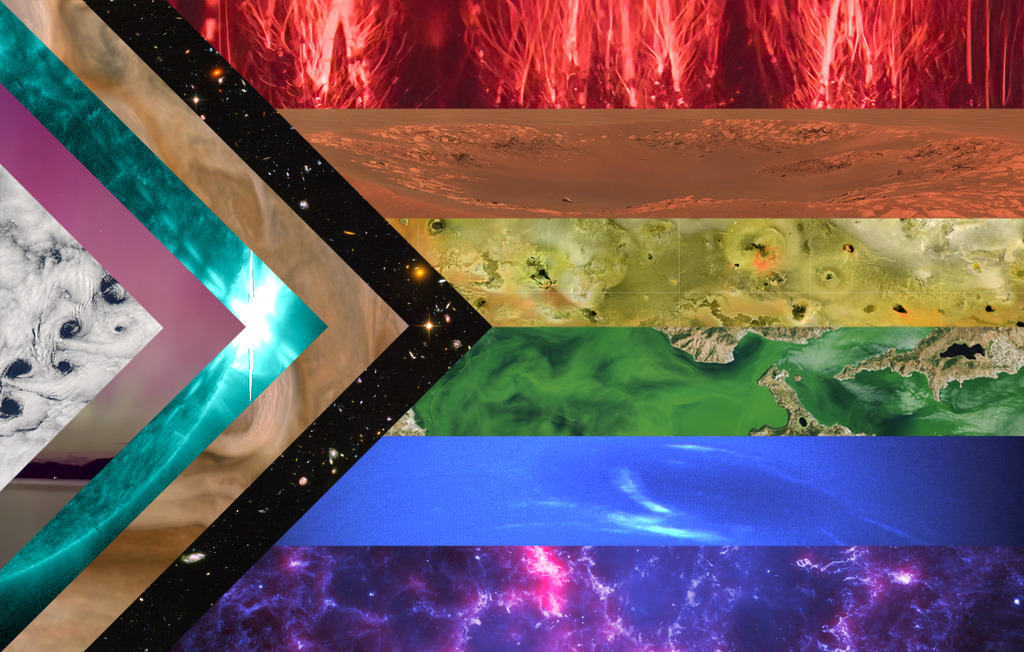
Higher resolution versions available at https://drive.google.com/drive/folders/1agB15KTujMlZAZXT5MzeHMcqVpvzFSCs?usp=share_link
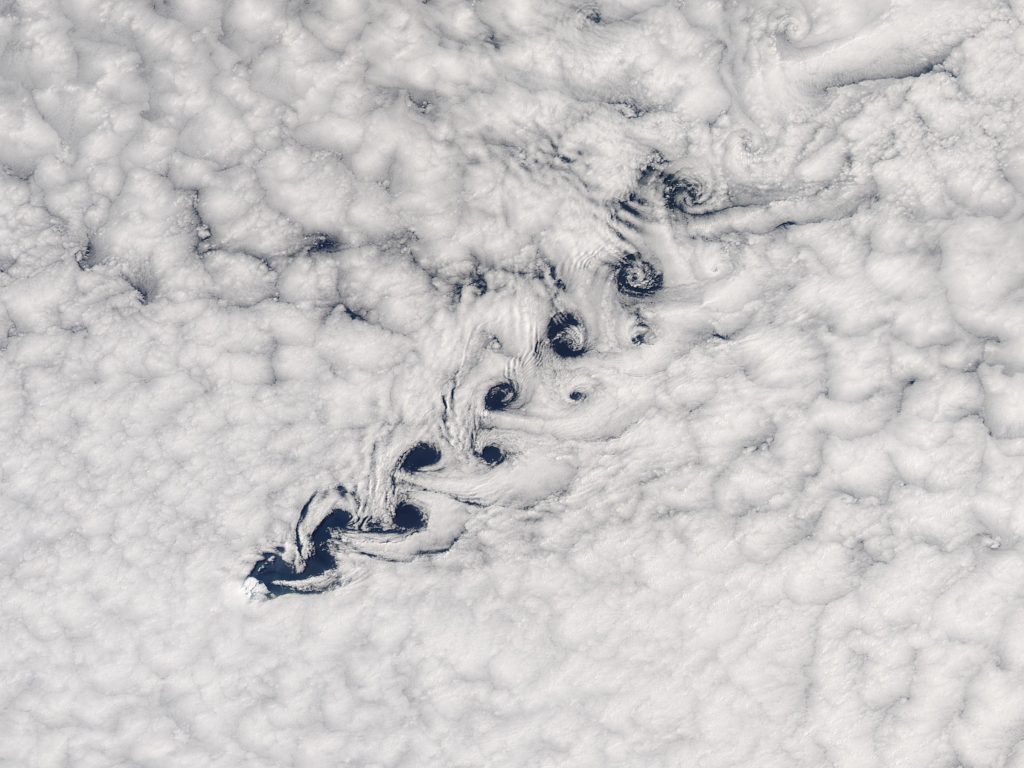
This photo of cloud vortices over Australia’s Heard Island near Antarctica shows the physical phenomenon known as vortex shedding. The Moderate Resolution Imaging Spectroradiometer aboard NASA’s Aqua satellite was captured on Nov. 2, 2015, at 5:02 a.m. EST (09:20 UTC).
Credit: NASA/Jeff Schmaltz/MODIS Land Rapid Response Team
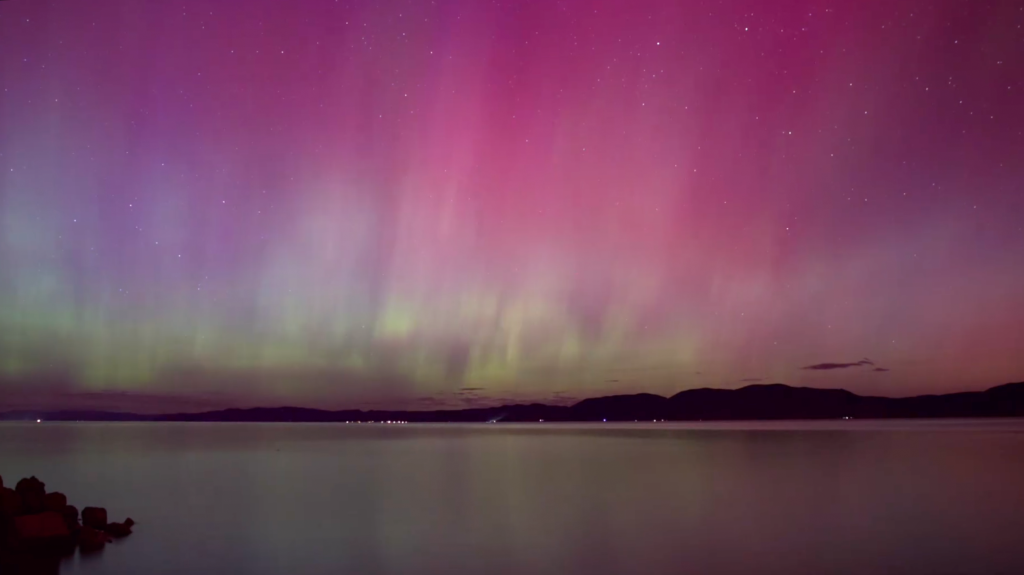
A large solar storm produced a series of coronal mass ejections in May 2024, causing beautiful auroral displays to be seen all over the globe. In Utah, much farther south than auroras are normally visible, NASA writer and producer Bill Dunford caught the multicolor phenomena dancing with their reflections over Bear Lake on May 11, 2024.
Credit: NASA/Bill Dunford
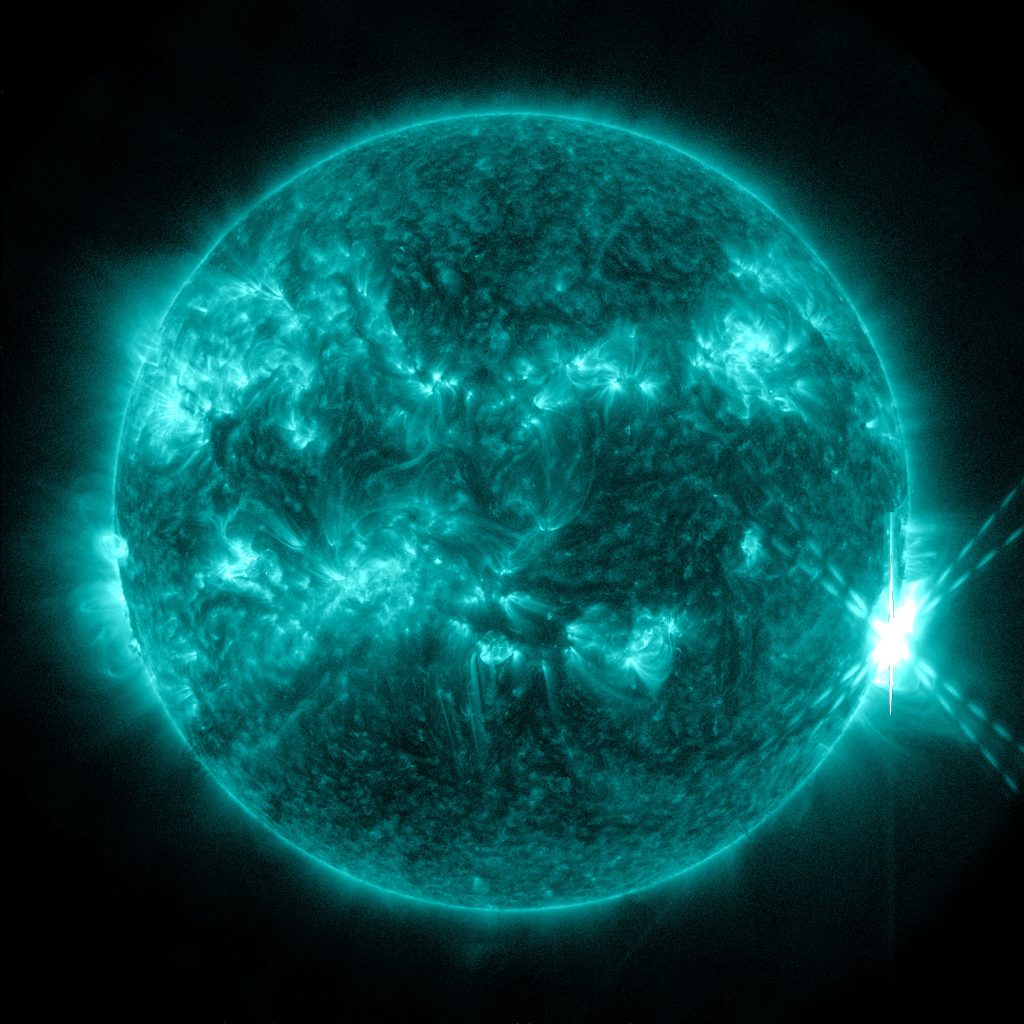
The Atmospheric Imaging Assembly on NASA’s Solar Dynamics Observatory captured this image of an X3.4 solar flare — as seen in the bright flash on the right — at 4:37 a.m. ET on May 15, 2024. Colorized in teal, the image shows a subset of extreme ultraviolet light (131 angstroms), highlighting the hot material in flares.
Credit: NASA/SDO
Source: https://svs.gsfc.nasa.gov/14593/#media_group_374284
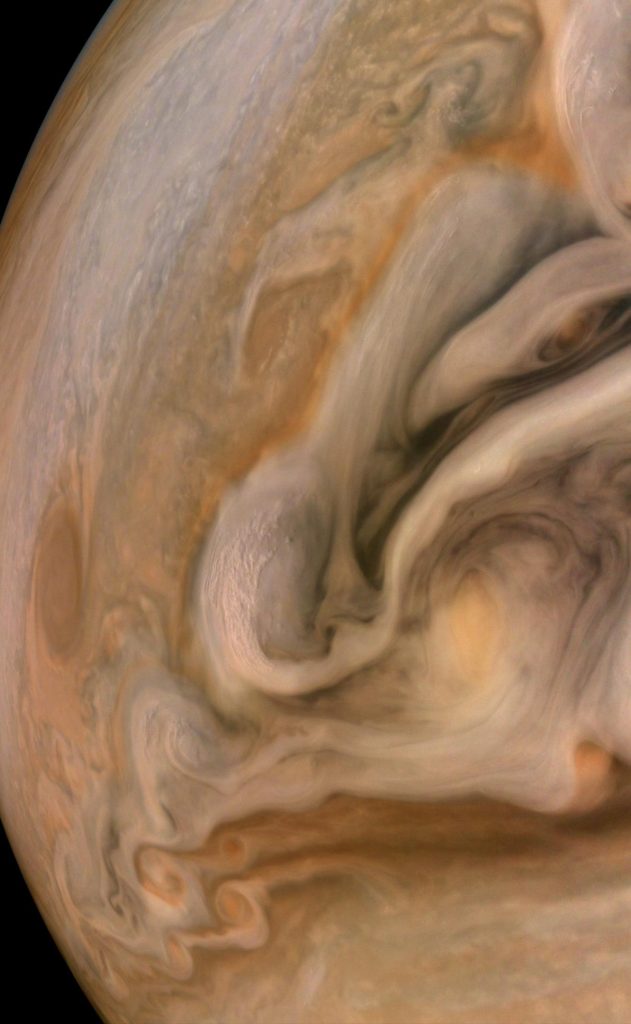
On Oct. 16, 2021, NASA’s Juno spacecraft flew over Jupiter’s North Temperate Belt, a region of the planet with particularly fierce storms. Featured here are “pop-up” clouds, or small, bright clouds that form at the edges of these fronts. They are thought to be parcels of gas pushed up to altitudes where ammonia condenses into ice. Although they appear to be small, these storms may be up to around 30 miles (50 kilometers) across. This photo was taken on the spacecraft’s 37th close flyby of the gas giant using its JunoCam.
Credit: NASA/JPL-Caltech/SwRI/MSSS/Brian Swift CC BY
Source: https://photojournal.jpl.nasa.gov/catalog/PIA24971
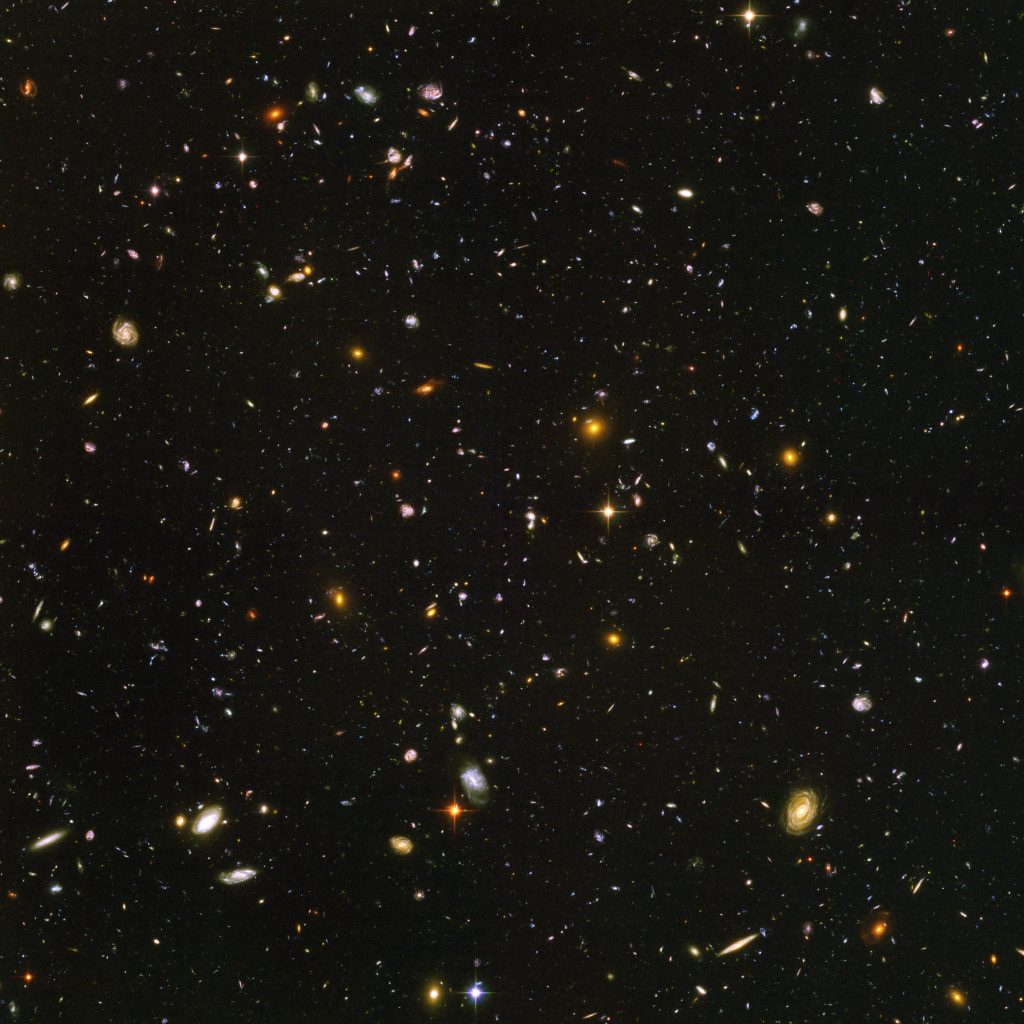
To the naked eye, a tiny fraction of the night sky near the Orion constellation seems completely empty, but with help from the Hubble Space Telescope, nearly 10,000 galaxies are revealed in this awe-inspiring image. Now known as the Hubble Ultra Deep Field, the image is actually a series of 800 shots taken by the telescope’s Advanced Camera for Surveys between September 2003 and January 2004.
Credit: NASA, ESA, S. Beckwith (STScI), and the HUDF Team
Source: https://hubblesite.org/contents/news-releases/2004/news-2004-07.html
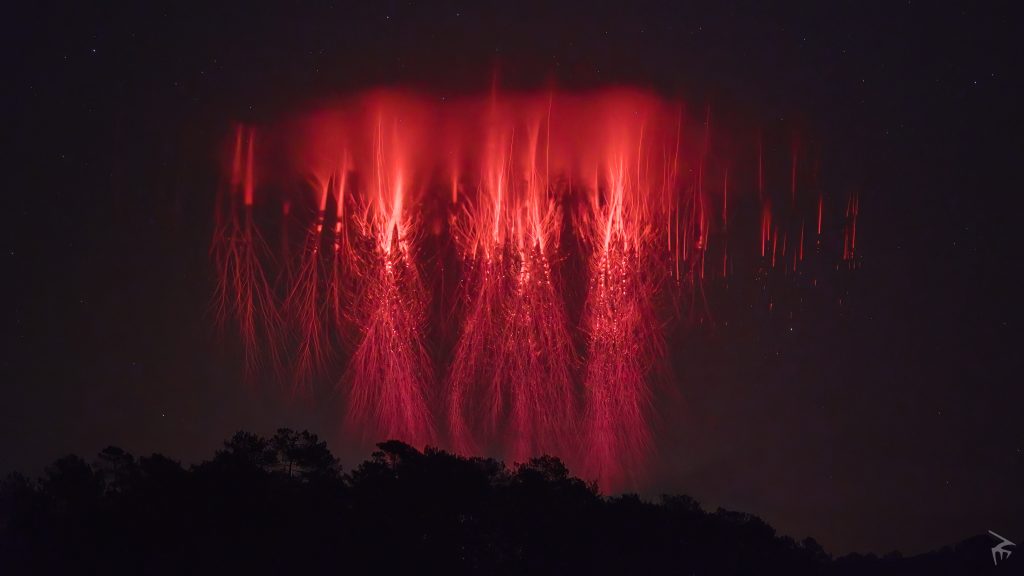
Sprites are a type of electrical discharge called a transient luminous event that can occur above powerful thunderstorms. The flashes last only a fraction of a second and can be categorized by their shapes. These jellyfish sprites were captured by sprite-chaser Nicolas Escurat in Dordogne, France, on Nov. 1, 2022. Escurat is an active contributor to NASA’s Spritacular citizen science project. To learn more about the project and see how you can participate, visit https://spritacular.org/.
Image credit: © 2022, Nicolas Escurat, used with permission. (Image not available for commercial use.)
Source: https://spritacular.org/gallery

NASA’s Opportunity rover trundled over the dusty Martian surface for almost 15 years, from 2004 to 2019. This approximate true-color image was captured on Nov. 11, 2010, with the rover’s panoramic camera, or Pancam. The crater featured in the image is about 66 feet (20 meters) in diameter and was named “Intrepid” after the lunar module that landed on the Moon in 1969.
Credit: NASA/JPL-Caltech/Cornell University
Source: https://science.nasa.gov/resource/intrepid-crater-on-mars/

Projection maps of planets and moons help scientists learn more about the surfaces of these celestial bodies. Jupiter’s moon Io is the most volcanically active body in the solar system. This geologic map of Io is pieced together with images taken by Voyager 1 and Galileo during their flybys and shows the many volcanoes spewing silicate lava onto the moon’s surface.
Credit: NASA/USGS/Tammy Becker and Paul Geissler
Source: https://www.nasa.gov/image-article/io-plain-view/
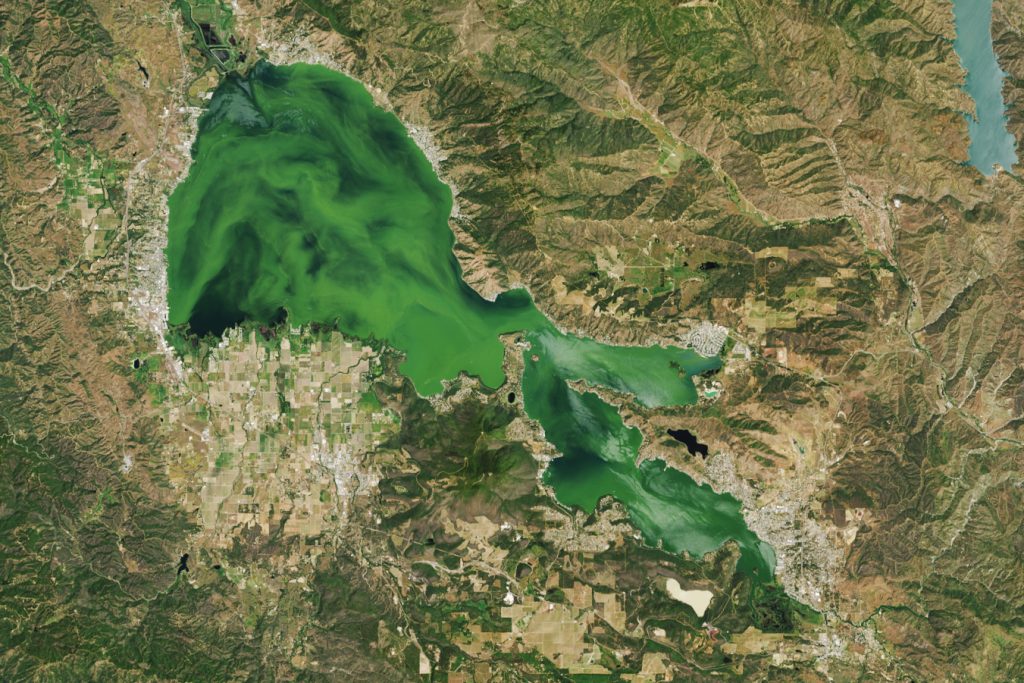
This image, captured in natural color by Landsat 9’s Operational Land Imager-2, was taken May 15, 2024, over Clear Lake in California. It shows bright green algae whirling over virtually all of the water’s surface. While algal blooms on this lake have occurred for millennia, human activities have recently increased the amount of nutrients entering the lake, and the number of harmful algal blooms have also increased.
Credit: NASA Earth Observatory/Landsat 9/USGS/Wanmei Liang
Source: https://earthobservatory.nasa.gov/images/152867/clear-lake-clouded-by-algae
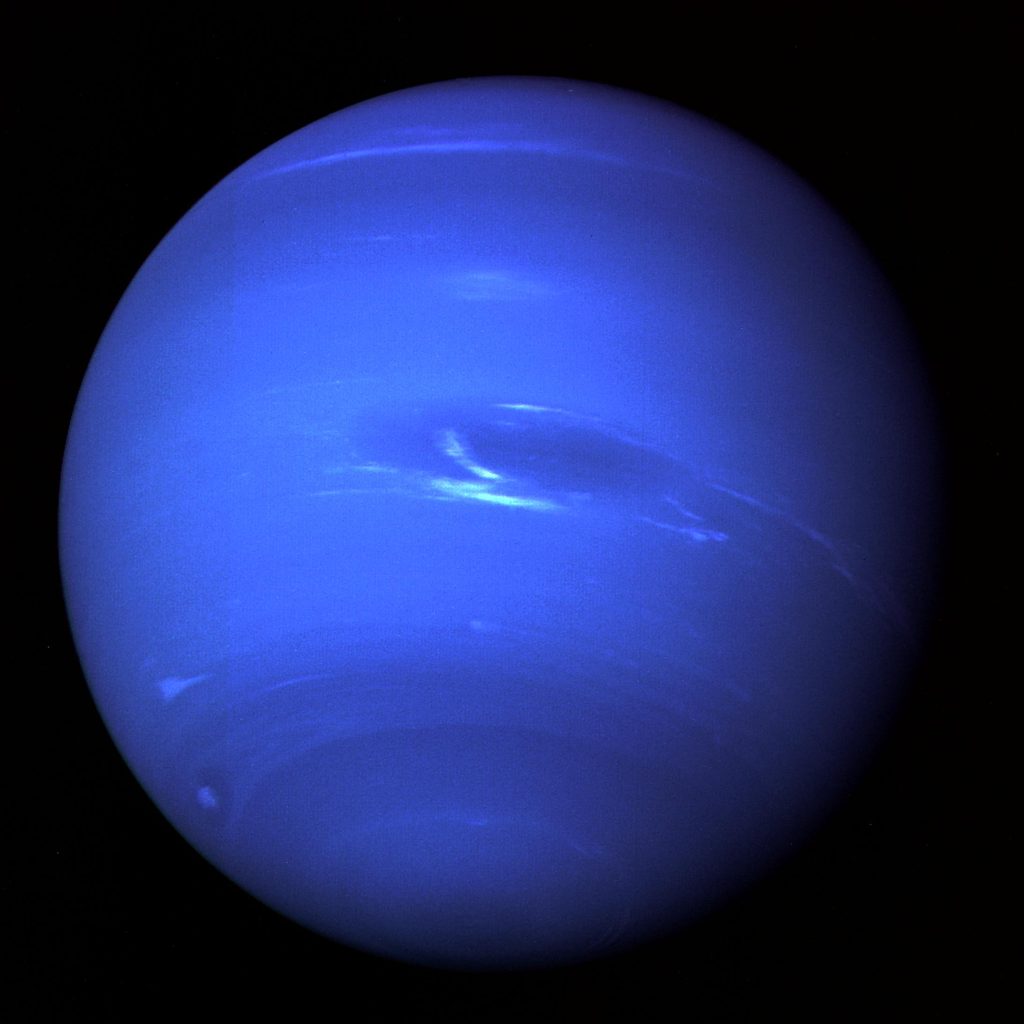
As NASA’s Voyager 2 approached Neptune on Aug. 25, 1989, it captured some of the only close-up images of the planet from about 4.4 million miles away. Featured prominently in this photo are the Great Dark Spot and a neighboring bright smudge, a bright feature scooting toward the limb nicknamed Scooter, and bright cloud bands toward the north and south poles.
Credit: NASA/JPL
Source: https://photojournal.jpl.nasa.gov/catalog/PIA01492
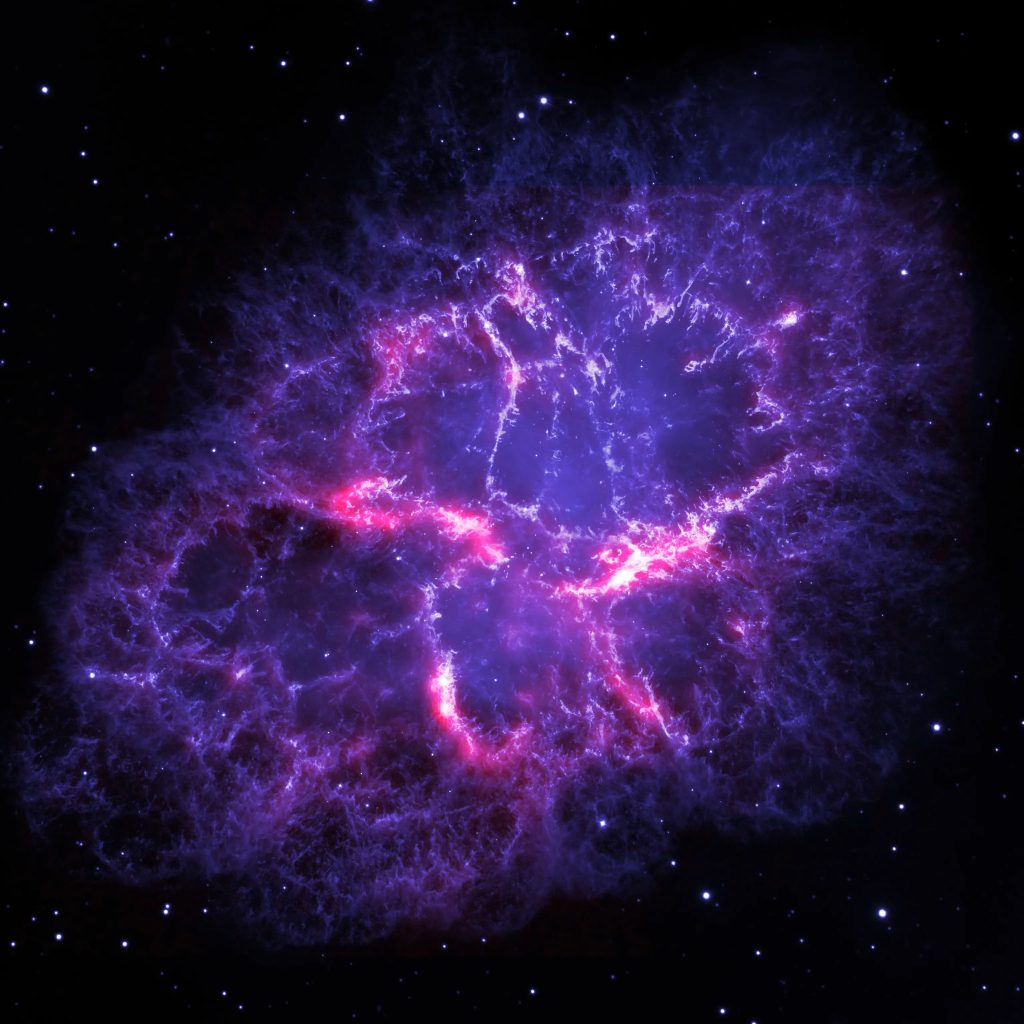
Combining observations from NASA’s Hubble Space Telescope and ESA’s (European Space Agency’s) Herschel Space Observatory produced a beautiful purple version of the Crab Nebula. The visible wavelengths from Hubble show oxygen and sulfur ions in blue whereas Herschel’s sensitivity to far-infrared light highlights dust in red. Using this data together, scientists discovered a compound of argon within the nebula — the first time a noble-gas-based compound has been discovered in space.
Image credit: NASA, ESA, and Allison Loll/Jeff Hester (Arizona State University); ESA/Herschel/PACS/MESS Key Programme Supernova Remnant Team